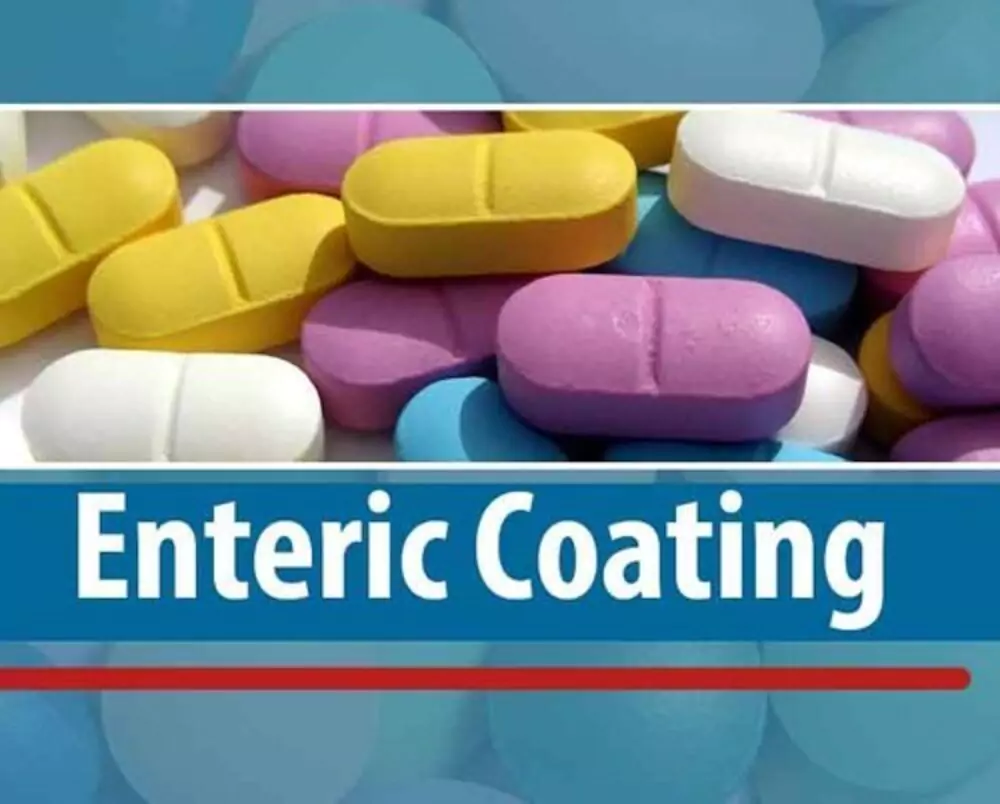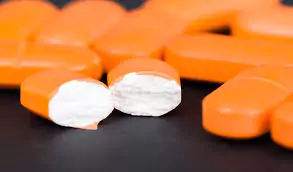Lorsque nous pensons aux médicaments, nous pensons souvent à la façon dont ils nous aident à nous sentir mieux. Mais saviez-vous que la façon dont un médicament est fabriqué peut affecter son efficacité ?
Deux points importants types de produits pharmaceutiques Les enrobages qui améliorent l'efficacité des médicaments sont l'enrobage entérique et le pelliculage. Ces deux méthodes enrobent les comprimés pour les protéger et contrôler la façon dont ils libèrent le médicament.
Explorons ces revêtements pharmaceutiques, comment ils peuvent affecter vos médicaments et lequel pourrait vous convenir le mieux.

Prêt à améliorer votre production avec des machines de revêtement de haute qualité ?
L'enrobage entérique et le pelliculage sont deux méthodes courantes utilisées dans l'industrie pharmaceutique. Ces deux procédés sont conçus pour améliorer l'efficacité des médicaments en protégeant les ingrédients et en garantissant qu'ils parviennent à la bonne partie du système digestif.
Bien qu’ils servent des objectifs similaires, ils ont des applications et des caractéristiques différentes.

Qu'est-ce que l'enrobage entérique ? L'enrobage entérique est une couche spéciale qui est appliquée sur certains comprimés. Cet enrobage permet de protéger le médicament de l'acide gastrique.
L'enrobage est conçu pour se dissoudre dans l'intestin plutôt que dans l'estomac. Cela est important car certains médicaments peuvent être endommagés par l'acide gastrique, et l'enrobage entérique contribue à les préserver.
L'enrobage entérique est généralement constitué de matériaux spéciaux qui résistent à l'environnement acide de l'estomac. Cela garantit que le médicament reste intact jusqu'à ce qu'il atteigne l'intestin, où il peut être absorbé correctement.
Il est important de ne pas casser les comprimés gastro-résistants. En les cassant, vous risquez d'endommager l'enrobage. Le médicament risque alors de se dissoudre dans l'estomac plutôt que dans l'intestin. Si cela se produit, le médicament risque de ne pas agir comme il le devrait et vous pourriez avoir des maux d'estomac.
Par exemple, si vous avez un comprimé à enrobage entérique censé soulager les brûlures d’estomac, le casser peut provoquer une irritation de l’estomac au lieu de lui permettre d’agir efficacement dans les intestins.
Non, ce n'est pas une bonne idée d'écraser les comprimés gastro-résistants. Cela endommagerait l'enrobage, ce qui pourrait altérer l'action du médicament. Consultez toujours un médecin ou un pharmacien si vous avez besoin d'aide pour prendre votre médicament.
Certaines personnes pensent qu'écraser un comprimé peut faciliter sa déglutition, mais cela peut avoir des conséquences imprévues. Si vous devez prendre un comprimé gastro-résistant, essayez de trouver d'autres méthodes, comme avaler le comprimé entier ou demander une version liquide si elle est disponible.

Qu'est-ce que le pelliculage ? Le pelliculage est une autre façon de protéger les comprimés. Il consiste à appliquer une fine couche sur le comprimé. Cette couche peut aider à rendre le comprimé plus facile à avaler.
Le pelliculage peut également protéger le médicament de l'humidité et de la lumière. Contrairement au pelliculage entérique, le pelliculage se dissout généralement dans l'estomac. Cela signifie que le médicament peut commencer à agir rapidement.
Les enrobages pelliculaires sont généralement constitués de polymères qui se dissolvent facilement dans le tube digestif. Cela signifie que dès que le comprimé pénètre dans l'estomac, l'enrobage se décompose, ce qui permet au médicament d'être libéré et absorbé dans la circulation sanguine.
Les comprimés pelliculés sont souvent plus attrayants pour les patients car ils ont tendance à avoir une surface plus lisse. Cela les rend plus faciles à avaler. L'enrobage pelliculaire peut également être aromatisé, ce qui peut aider à masquer tout goût désagréable des ingrédients qu'il contient.
En plus d'améliorer l'appétence, le pelliculage fournit une barrière protectrice qui empêche l'humidité et la lumière de dégrader le comprimé. Cela fait des comprimés pelliculés un excellent choix pour de nombreux types de médicaments qui doivent conserver leur efficacité au fil du temps.
Examinons quelques différences clés entre le revêtement entérique et le revêtement pelliculaire :
| Fonctionnalité/Caractéristique | Enrobage entérique | Revêtement pelliculaire |
| Objectif et fonction | Protège de l'acide gastrique ; se libère dans l'intestin | Améliore la déglutition ; protège de l'humidité |
| Lieu de dissolution | Se dissout dans l'intestin | Se dissout dans l'estomac |
| Composition du matériau | Fabriqué à partir de polymères résistants aux acides | Fabriqué à partir de polymères qui se dissolvent facilement |
| Type d'application | Utilisé pour les médicaments sensibles à l'acide gastrique | Utilisé pour divers médicaments |
| Coût et complexité de la production | Généralement plus cher et plus complexe | Généralement moins cher et plus facile à appliquer |
| Capacité à contrôler la libération de médicaments | Permet une libération contrôlée dans l'intestin | Conçu principalement pour une diffusion immédiate |
L'enrobage entérique protège le médicament de l'acide gastrique et lui permet de se dissoudre dans l'intestin. L'enrobage pelliculaire facilite la déglutition des comprimés et les protège de l'humidité. Chaque enrobage remplit une fonction unique en fonction des besoins spécifiques du médicament.
Les comprimés à enrobage entérique se dissolvent dans l'intestin. Les comprimés pelliculés se dissolvent dans l'estomac. Cela est important pour savoir comment et quand le médicament est libéré dans l'organisme. Par exemple, si un médicament doit être absorbé dans l'intestin pour une efficacité maximale, l'enrobage entérique est essentiel.
Les enrobages entériques sont souvent fabriqués à partir de matériaux résistants à l'acide gastrique, comme les polymères. Les enrobages pelliculaires sont généralement fabriqués à partir de matériaux qui se dissolvent facilement dans l'estomac. Le choix des matériaux a un impact sur le comportement du comprimé une fois ingéré.
L'enrobage entérique est utilisé pour les médicaments qui doivent éviter l'acidité gastrique. Le pelliculage peut être utilisé pour de nombreux types de comprimés, en particulier ceux qui sont difficiles à avaler. Cette polyvalence fait du pelliculage un choix populaire dans l'industrie pharmaceutique.
L'enrobage entérique peut être plus coûteux et plus complexe à appliquer que l'enrobage pelliculaire. En effet, les matériaux et les processus utilisés dans l'enrobage entérique nécessitent une manipulation minutieuse. Les fabricants peuvent avoir besoin d'équipements et de techniques spécialisés pour assurer un enrobage approprié.
L'enrobage entérique permet une libération contrôlée du médicament dans l'intestin. Le pelliculage peut également aider à contrôler la libération, mais il est principalement conçu pour la protection et la facilité de déglutition. Il est essentiel pour les fabricants et les prestataires de soins de santé de comprendre comment chaque enrobage affecte la libération du médicament.

Si vous êtes intéressé par le revêtement en sucre ou le revêtement en film, consultez notre article précédent !
Lorsque vous choisissez entre un enrobage entérique et un pelliculage, tenez compte de ces facteurs importants :
| Facteur | Enrobage entérique | Revêtement pelliculaire |
| Administration correcte | Ne doit pas être cassé ou écrasé | Peut être mâché ou écrasé (selon les instructions) |
| Éviter les effets secondaires | Protège contre les irritations de l'estomac | Peut ne pas protéger contre l’acide gastrique |
| Interactions médicamenteuses | Aide à réduire l’irritation de l’estomac avec d’autres médicaments | Peut ne pas fournir de protection contre les interactions |
| Sécurité des médicaments | Sans danger pour les médicaments qui irritent l'estomac | Généralement sûr, mais peut ne pas offrir de protection spécifique |
Assurez-vous de suivre les instructions de prise du médicament. Certains comprimés doivent rester entiers, tandis que d'autres peuvent être mâchés ou écrasés. Par exemple, les comprimés à enrobage entérique ne doivent pas être cassés ni écrasés. Cela garantit qu'ils agiront comme prévu.
Choisir le bon enrobage peut aider à prévenir les effets secondaires. Certains médicaments peuvent provoquer des maux d'estomac s'ils ne sont pas correctement enrobés. Par exemple, un enrobage entérique peut aider à protéger les médicaments sensibles de l'environnement hostile de l'estomac.
Ceci est particulièrement important pour les médicaments connus pour irriter la muqueuse gastrique. Si ces médicaments ne sont pas à enrobage entérique, ils peuvent entraîner une gêne et réduire l'observance du traitement par le patient.
Certains médicaments peuvent interagir négativement avec d’autres. Le choix de l’enrobage peut aider à gérer ces interactions. Par exemple, les médicaments à enrobage entérique peuvent être un meilleur choix pour les patients qui prennent d’autres médicaments susceptibles de provoquer une irritation de l’estomac.
Cela peut conduire à une meilleure expérience globale du traitement et améliorer l'efficacité des médicaments utilisés. Discuter des interactions potentielles avec un professionnel de la santé peut aider à déterminer le meilleur revêtement pour des situations spécifiques.
Il est important de s'assurer que l'enrobage est sûr pour l'usage prévu. Les enrobages entériques et pelliculaires sont généralement sûrs, mais vous devez toujours consulter un professionnel de la santé si vous avez des inquiétudes. Comprendre les implications de l'enrobage sur la sécurité des médicaments peut vous aider à prendre des décisions éclairées.
Par exemple, certains patients peuvent être allergiques à certains matériaux utilisés dans les revêtements. En être conscient peut permettre d'éviter d'éventuelles réactions indésirables et de garantir la sécurité du patient pendant la prise de ses médicaments.
Si vous recherchez des solutions de revêtement de haute qualité, pensez à Canaan machines de revêtement.
Nous proposons des options fiables et efficaces pour les processus d'enrobage entérique et pelliculaire. Ces machines permettent de garantir que les médicaments sont correctement enrobés, améliorant ainsi leur efficacité.
Contactez-nous aujourd'hui pour en savoir plus !




La fabrication pharmaceutique par des tiers consiste pour les entreprises à externaliser la production de leurs produits auprès d'entreprises spécialisées. Cette pratique leur permet de se concentrer sur la recherche et le développement. Ce guide présente les avantages, les processus et les considérations liées à la fabrication par des tiers. Points clés : Comprendre la fabrication pharmaceutique par des tiers. La fabrication pharmaceutique par des tiers est un service dans lequel une entreprise fait appel à […]

La découverte pharmaceutique est essentielle à la découverte de nouveaux traitements contre les maladies. Ce processus commence par l'identification des cibles médicamenteuses et se termine par la mise sur le marché de médicaments sûrs et efficaces. Dans cet article, nous expliquons chaque étape de la découverte pharmaceutique et mettons en lumière les innovations qui transforment ce domaine aujourd'hui. Points clés : Le processus de découverte de médicaments est complexe et implique de multiples […]

Pour savoir comment créer une entreprise pharmaceutique, il faut réaliser une étude de marché, élaborer un business plan, obtenir des financements et se conformer aux exigences réglementaires. Ce guide abordera ces étapes importantes et bien d'autres pour vous aider à lancer et développer une entreprise pharmaceutique prospère. Points clés : Réaliser une étude de marché complète. Créer une entreprise pharmaceutique […]